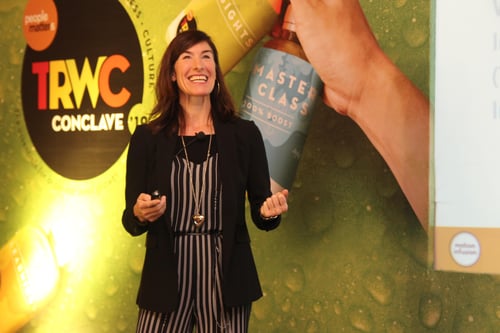
“What is you at your best?” This is a question I often use to kick off any keynote or workshop. And, quite simply, this is what workplace wellness should be about: helping people to be their best.
So, why is it that when we are at work, we are doing anything but becoming our better selves? Rather, for too many of us, we are overworked, overstressed, and overweight – literally “dying for a paycheck.” No wonder, we are seeing a tidal wave of heart disease, diabetes, stress, burnout and depression – driven largely by lifestyle and unhealthy work environments.
So the question is: What can each of us do to arrest this tidal wave? And, what can organizations do?
I recently returned from speaking at a conference in India where I shared 3 lessons learned from USA on how we can ensure that workplace wellness actually works. Here they are:

In the world of workplace wellness, we have wrongly associated incentives with motivation. For too long, the thinking goes: If we incentivize employees, then they will be motivated to participate in wellness. If only it were that easy! Meanwhile, the research shows that incentives – at best – may get people in the door, but they will never keep them there.
Moreover, there is evidence to suggest that rewards and penalties may lead to a whole host of unintended effects, like perversely inspiring people to “cheat” the system in order to win the points. I'm sure you’ve all heard stories, as highlighted in a recent Wall Street Journal article Want to cheat your Fitbit? Try a Puppy or a Power Drill.
The truth of the matter is that the idea of “getting” someone motivated is an oxymoron. Rather, the best organizations can do is to create an environment where people are more likely to motivate themselves. This leads us to the idea of what researchers called intrinsic motivation, that is, motivation that comes from within.
Intrinsic motivation taps into an individual’s need for mastery – how can I get good at this? It also taps into an individual’s need for association and relatedness – who are people I can get healthier with? Lastly, intrinsic motivation taps into an individual’s “why” – what’s my deeper sense of purpose?
When well-being efforts start tapping into these deeper motivators, then it starts to feel less like a “program” and more like a movement.
Engaging senior leaders to support and model well-being is essential. Their participation matters in setting the tone and allocating resources. But perhaps more important is the participation of managers. Research suggests that managers effectively give permission to their teams to engage with well-being.
The manager alone likely accounts for 70% of the extent to which a team member is likely to engage with both their well-being and their work, according to Gallup.
Upshot: Every manager has the opportunity to either serve as a multiplier of well-being (which is great!) or just the opposite, namely a gatekeeper (which is, sadly, too often the case). Case in point: if you are one of those managers who send out late night emails, every hour that you engage in afterhours email time roughly translates into an additional 20 mins of afterhours email time for your employees, according to a recent study.
On a positive note, every manager has the capacity to carve out a “micro-culture” of well-being within their team, and these micro-cultures, or “pockets” of well-being, can in turn spark a ripple effect throughout the entire organization.
To learn more about how you can activate the managers in your organization to become multipliers of well-being, please join me on April 1st & 2nd at the Art & Science of Health Promotion Conference in Hilton Head, SC for my Activating Managers Boot Camp.
Finally, if we really want to make workplace wellness work, we need to move away from the notion that human beings are “creatures of habit.” I would argue that, in fact, human beings are more creatures of culture. So, rather than focusing so much on individual habit formation, we should be focusing more on culture curation.
The truth is that the larger culture we have created – which is always-on, always-sitting, always eating-food-on-the-go – promotes stress, burnout, poor health and obesity. Simply put: We live in a toxic culture and environment.
The good news is that every organization can create a healthy environment and culture to offset this toxic macro-culture. If the goal is to promote employee health and well-being in a way that actually works, a company would be wise to focus less on the individual and more on optimizing the environment and culture around the individuals. The way that organizations can do so is by designing nudges, as in environmental prompts, and cues, as in cultural prompts, to help employees in their wellness journeys.
Finally, let’s not forget that workplace wellness is a really, really good idea. Why not leverage the workplace (where most adults spend the majority of their waking hours) as a place to promote better health and well-being?
By implementing these three lessons learned, every organization can ensure that workplace wellness actually works – where every employee can become their version of “Me At My Best.”
If you’re in the Bay Area, and are interested in learning more about how you can build a movement of well-being in your organization, please join me at Stanford University where I’ll be teaching a Workplace Wellness That Works continuing studies course on April 6th & 13th!
How can a positive culture affect the workplace? See how it changed the employee and patient experience at Northwell Health:
